Solar system |
Solar systems | |  Automatic translation Automatic translation | | Updated June 01, 2013 |
The solar system is the name given to the gravitational system composed mainly of the Sun but also hundreds of millions of different celestial objects (planets, asteroids, comets, dust and gas) orbiting around it. A solar system is a star system with one star, the Sun. However, due to space telescopes, astronomers have observed multiple planetary systems with two, three or more stars. Such systems tend to form a central pair, the other components acting as a disturbance to the orbital movement of the set of objects. More than half of the stars systems are binary systems.
But what is remarkable observing our solar system, is the extraordinary diversity of objects that are connected. Yet they are all formed from the same cloud at the same place in the universe, from the same materials, at the same time there are about 5 billion years.
How objects could they evolve so differently from identical initial conditions?
Astrophysicists have long sought to understand this phenomenon. And the most amazing is that an object was able to create the conditions for the emergence of life and to have them preserved until today. If astrophysics explains quite well the evolution of stars, it is far to explain the evolution of the planets.
What are the conditions that led to the Earth so much complexity?
Is this the most complex object in the universe?
How planets absorbed energy as different? | | From the same initial state, all objects over time will evolve differently, they will gradually acquire an internal energy and will slowly lose function of their mass. Indeed, the size of the object has a major importance in the accumulation of internal energy, astronomical objects are like energy tanks which are emptied little by little as the radioactive decay of its elements.
The main engine of the active planets is internal radioactivity that maintains a certain energy (heat) in the center of the planet.
The huge solar energy is not sufficient to maintain our active planet (volcanism, continental drift, recycling the atmosphere,...) because it is blocked at the earth's surface and does not penetrate the center of the Earth. This trapped energy inside the Earth is the radioactivity of uranium, thorium and potassium. If there was no radioactive decay, the Earth would be a dead planet.
More the tank is bigger and more it will store energy. When the object is large it cools slowly. Thus, the small asteroids and comets has frozen there 5 billion years, the large asteroids has frozen there 4 billion years, the Moon has frozen there is 3 billion years, Mars has frozen there to 1 billion years, the Earth after 4.2 billion years ago is still an active planet.
More the objects in the solar system are small (asteroids, comets) and more they interest the scientists because they spread their energy in space and kept intact the materials since their "dead", especially organic molecules. | | 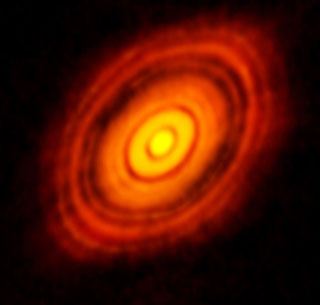 Image: this picture is the most accurate ever produced with the network of 66 antennas of the giant radio telescope (ALMA) located in the Atacama Desert in northern Chile. This image taken in the millimeter wave is more accurate than images usually obtained in the visible with the NASA / ESA Hubble Space Telescope. We clearly see the protoplanetary disk around the young star HL Tauri. These new observations of ALMA reveal structures in the disk never seen before, and even reveal the possible locations of planets forming in the dark areas in the heart of the emerging system. HL Tauri is located 450 light-years away in the constellation Taurus. Credits: ALMA (ESO/NAOJ/NRAO). |
Our solar system and planets | | | | |
Our solar system consists of the Sun, eight planets, many dwarf planets and small bodies like asteroids and comets, with their satellites.
In the center is the Sun, our star that contains 99.86% of the mass of the entire system. The interior of the Sun has a density and temperature such as thermonuclear reactions occur, releasing enormous amounts of energy. The majority of this energy is released into space as electromagnetic radiation, mainly in the form of visible light. The Sun also emits a stream of charged particles called the solar wind. The solar wind interacts strongly with the magnetosphere of the planets and contributes to eject gas and dust outside the solar system. The planets nearest the Sun are the terrestrial planets, small, rocky and dense, with a slow rotation, solid surfaces, no rings and few satellites.
From the Sun, we find Mercury, Venus, Earth and Mars. | | Many small rocky bodies called asteroids are present in the solar system, a significant portion of them circulate in a ring between the orbits of Mars and Jupiter (2 to 4 UA (symbol: UA) The distance averages of the Earth in the Sun. An UA is worth 149 597 871 km. It is a unity often used for the distances in the solar system, or for the space of two stars in a double system. ), in what astronomers call the asteroid belt, otherwise known main belt.
In addition, further opens the field of giant planets, gaseous and sparse, with a core of small size: Jupiter, Saturn, Uranus and Neptune.
Beyond Pluto, Eris and other objects in the Kuiper Belt. Pluto is the second dwarf planet in the solar system in size. It belongs to the Kuiper Belt.
The solar system, which had nine planets since 1930, only contains eight since August 2006 (Pluto was added to the list of minor objects in the solar system and was awarded the number 134340 in the catalog of minor objects). This belt, with thousands of asteroids, is the reservoir of short-period comets. | | 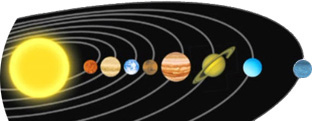
Image: Planets of the solar system are not drawn to scale, either in size or distance. In the solar system, the Sun has captured 99.86% of the total mass of dust and gas of the original nebula. Jupiter, the largest planet in the system, has captured 71% of the remaining mass. The other planets have shared the residue of the gravitational evolution, i.e. 0.038% of the total mass. |
Our solar system and its objects | | | | |
The solar system is actually much more complex than it seems, considering its gravitational influence (150,000 AU) and all its objects.
A considerable number of small icy objects of similar size to that of asteroids are in the Kuiper Belt and beyond, into the Oort cloud.
The Kuiper Belt imagined in 1951 by Gerard Kuiper, extending from the orbit of Neptune (30 AU) to about 100 AU.
They are also called trans-Neptunian objects or "ice dwarf," is the source of short-period comets. Since the discovery of the first object in 1992, the number of objects discovered in the Kuiper belt has passed the thousand and is thought to contain more than 70,000 bodies of more than 100 km in diameter.
The OortBy studying the orbits of comets, Ernst Opik, astronomer Estonian hypothesized in 1932 that comets come from a "cloud" located in the outer solar system. The idea of Opik was taken over by Dutch Jan Oort in 1950. He made the observation that comets are destroyed gradually by spraying it as and when they pass around the sun, or if they existed since the creation of the solar system, they would be destroyed for a long time... cloud could be about 50 000 AU from the Sun, well beyond the Kuiper Belt, and contain many billions of nuclei of comets of more than 1.3 km. | | The data from Voyager 1 and 2, published in July 2008, reveal that the bubble formed by the solar wind around our planetary system would have the form of a balloon stretched and compressed to one end. Image: Of the image against the Kuiper Belt and Oort Cloud are shown to scale, the small blue spot in the center is the space occupied by the Kuiper belt and center of it, the solar system as we used to see, consists of its eight planets.
The Kuiper belt to a diameter 5 to 10 times higher than the solar system and the Oort Cloud has a diameter 1000 times that of conventional solar system. | | 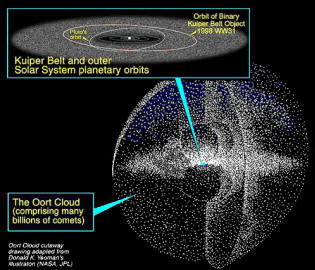 |
Birth of the Solar System | | | | |
The event happens there are 4.5 billion years in the vicinity of a spiral arm of the Galaxy. In a nebula of gas turning opaque, small clusters are formed.
Among them, our future Sun escapes while his companions scatter in the Milky Way. Central to this future system still gas, a star is formed, aided by the force of gravity, it contracts and will capture 99.86% of the total mass of the cloud.
During this period the juvenile core temperature increases. This cloud will contract again until reaching temperatures of several million degrees kelvin. This heating of the heart will trigger the initiation of thermonuclear reactor. In this phase the protons combine releasing energy under the influence of the nuclear force. It is the fusion of hydrogen into helium, which stops the contraction of the star and that stabilizes the volume.
In the solar system, the Sun has captured 99.86% of the total mass of dust and gas of the original nebula. Jupiter, the largest planet in the system, has captured 71% of the remainder.
The other planets are shared, the residue of the gravitational evolution. Our Sun was born! remember that our Sun has captured 99.8% of the total mass of the system.
The rest of the hot gaseous nebula of departure, the composition is identical to that of the Sun, continues to lose heat.
There comes a point where it reaches the temperature at which certain chemical compounds are more stable in the gaseous state. | | These compounds are then condensed, not liquid but solid as the pressure is very low. The nebula is responsible therefore solid grains, dust, known as condensats Solid grains of chemical and mineralogical birth fused in the nebulae, following is called: the sequence of condensation. The first compounds that condense at 1300 ° C, are rich in titanium oxides, aluminum and calcium. 1050 ° C to condense the massive metallic iron and then to 950 ° C, the first in this case, silicate magnesium silicate and iron. To 800 ° C, to form silicates looser structures, feldspars and iron sulfide. At even lower temperatures to condense a silicate containing water at 0 ° C and the water condenses into ice.. These are grains that, by accumulating as a result of gravitation, will give rise to solid objects larger and larger, first, to meteorites, and later, to the planets. solar system | % Of the total mass | | | | | Sun | 99,86604% | | Jupiter | 0,09532% | | Saturn | 0,02854% | | Neptune | 0,00514% | | Uranus | 0,00436% | | Earth | 0,00030% | | Venus | 0,00024% | | Mars | 0,00003% | | Mercury | 0,00002% |
Image: The Sun has captured 99.86% of the total mass of dust and gas of the original nebula.
Jupiter, the largest planet in the system, has captured 71% of the remainder. The other planets have shared the residue of the gravitational evolution. | | 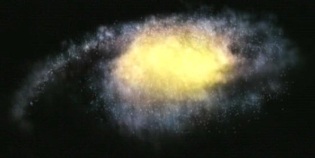 Image: The solar system belongs to a galaxy called the Milky Way, among the billion galaxies forming the observable universe.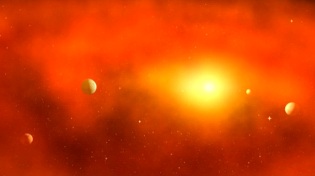
|
Cycles du Soleil | | | | |
The activity of our star is experiencing a cycle of 11.2 years on average which can vary from 9.5 to 12.5 years. The solar cycle is due to changes in the internal magnetic field of the Sun.
It goes through a solar maximum, in which spots, coronal mass ejections and flares are the most common, to go to a minimum, where all these activities are at their lowest.
The last solar minimum occurred in 1997 and 2007, while the last maximum was in 2001.
The first recorded solar cycle is the cycle of years from 1755 to 1766. The cycle ends in 2007, is number 23 (and labeled).
It Heinrich Schwabe (1789-1875) who discovered this cycle by observing the appearance of stains.
The solar cycle has a significant effect on the state of the ionosphere as it modifies the conditions of radio wave propagation. | | It also amends the warming of the atmosphere. In conjunction with the 11-year cycle, there is also a cycle of 22 years during which the polarity of the field reversed every new cycle of 11 years.
It gives many more cycles to the Sun but more complex to determine: the cycle of Gleissberg a period of from 80 to 90 years, the Suess cycle of a period of 150 to 200 years, the cycle of Hallstattzeit of a period of 2300 years. Image: A complete solar cycle observed by the satellite observation of the Sun (SOHO), which celebrated its 12th anniversary launch December 7, 2007. It shows the intensity of solar activity represented by the white spots. | | 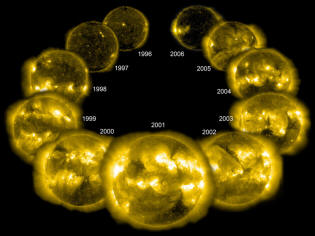 |
Lifetime of the Sun | | | | |
In about 5 billion years our sun will have turned all its hydrogen into helium.
A further contraction will heat the helium nuclei, which combined give the 3 by 3 and 4 by 4 carbon oxygen. The outer layers will swell and cool and our planet will become a red giant as, Arcturus, Betelgeuse, Antares and others present.
Meanwhile his heart continues to contract until it reaches the temperature that will ignite the thermonuclear fusion of helium to make carbon. This phase will last just a million years.
All material is sprayed on nearby planets.
Successive fusion of carbon and oxygen nuclei will give rise to valuable such as magnesium, aluminum, silicon, which are our terrestrial rocks, such as phosphorus and sulfur essential to the development of life. | | These phases of fusion will become shorter, we arrive at the end of reserves of material. The Sun will die making the food for deep space it provided.
It will not be a white dwarf and thus closes the loop. Each star contributes to enrich the interstellar medium, heavy elements absent during the formation of the universe. About 10% of stars are dwarf stars.
These stars end of life already lived our time and have enriched the material allowed us to live. Death of the Sun will sow the seeds of other life forms... NB: Unlike the planets in our solar system, extrasolar planets often appear to have elliptical orbits, which vary greatly temperature, which is not ideal for the emergence of life. | |
| Objects |
Semi-major axis |
| |
|
| Mercury |
57 900 000 km |
| Venus |
108 200 000 km |
| Earth |
149 600 000 km |
| Mars |
227 900 000 km |
| Jupiter |
778 410 000 km |
| Saturn |
1 427 000 000 km |
| Uranus |
2 870 000 000 km |
| Neptune |
4 496 000 000 km |
|
Distances par rapport au Soleil | | | | |
| objects | Distance from the Sun in millions of km | | Mercury | 57,9 | | Venus | 108,2 | | Earth | 149,6 | | Mars | 227,9 | | Jupiter | 778,41 | | Saturn | 1427 | | Uranus | 2870 | | Neptune | 4496 |
| | | Objects | Sidereal revolution in years | | Mercury | 0,241 | | Venus | 0,615 | | Earth | 1 | | Mars | 1,881 | | Jupiter | 11,317 | | Saturn | 29,458 | | Uranus | 84,015 | | Neptune | 164,788 |
| | | Objects | Mean orbital velocity in km/s | | Mercury | 47,9 | | Venus | 35 | | Earth | 29,8 | | Mars | 24,1 | | Jupiter | 13,05 | | Saturn | 9,6 | | Uranus | 6,8 | | Neptune | 5,4 |
|
| Objects | Equatorial diameter in km | | | | | Mercury | 4880 | | Venus | 13 004 | | Earth | 12 756 | | Mars | 6 796 | | Jupiter | 142 984 | | Saturn | 120 536 | | Uranus | 51 118 | | Neptune | 49 528 |
| | | Objects | Albedo (reflection coefficient) | | Mercury | 0,055 | | Venus | 0,61 | | Earth | 0,34 | | Mars | 0,15 | | Jupiter | 0,52 | | Saturn | 0,42 | | Uranus | 0,45 | | Neptune | 0,54 |
| | | Objects | Density in g/cm2 | | | | | Mercury | 5,3 | | Venus | 4,95 | | Earth | 5,52 | | Mars | 3,95 | | Jupiter | 1,33 | | Saturn | 0,69 | | Uranus | 1,56 | | Neptune | 2,27 |
|
| Objects | Mass to Earth mass | | | | | Mercury | 0,0553 | | Venus | 0,815 | | Earth | 1 | | Mars | 0,1074 | | Jupiter | 317,833 | | Saturn | 95,159 | | Uranus | 14,499 | | Neptune | 17,204 |
| | | Objects | Escape velocity in km/s | | | | | Mercury | 4,3 | | Venus | 10,4 | | Earth | 11,2 | | Mars | 5,1 | | Jupiter | 61 | | Saturn | 36,7 | | Uranus | 22,4 | | Neptune | 25,5 |
| | | Objects | Period of rotation at the equator | | Mercury | 58,646 jours | | Venus | 243,019 jours | | Earth | 23H56 | | Mars | 24H37 | | Jupiter | 9H50 | | Saturn | 10H14 | | Uranus | 10H49 | | Neptune | 15H40 |
|
| Objects | Inclination of the equator | | | | | Mercury | 0 ° | | Venus | 178 ° | | Earth | 23,5 ° | | Mars | 24 ° | | Jupiter | 3 ° | | Saturn | 27 ° | | Uranus | 98 ° | | Neptune | 30 ° |
| | | Objects | Magnitude | | | | | Mercury | - 1,9 | | Venus | - 4,4 | | Earth | | | Mars | - 2,8 | | Jupiter | - 2,5 | | Saturn | - 0,4 | | Uranus | + 5,6 | | Neptune | + 7,3 |
| | | Objects | Temperature
mean | Temperature
max et min | | Mercury | 169 °C | + 427 °C à -183 °C | | Venus | 462 °C | 490°C à 446 °C | | Earth | 15 °C | +56,7 °C à -89,2 °C | | Mars | -63 °C | -3 °C à -133 °C | | Jupiter | -163 °C | | | Saturn | -189 °C | | | Uranus | -220 °C | | | Neptune | -218 °C | |
|
 Automatic translation
Automatic translation








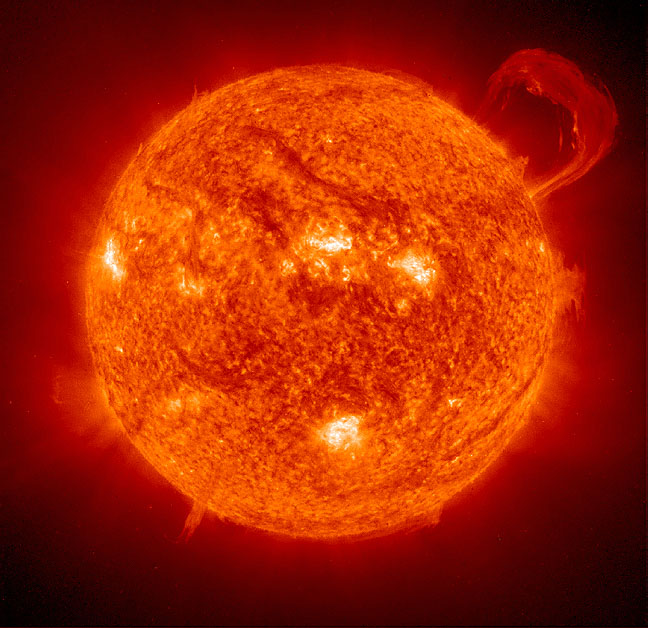 How to weigh the sun?
How to weigh the sun?
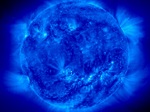 The spicules of the Blue Sun
The spicules of the Blue Sun
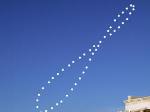 Explanation of the 8 of the analemma
Explanation of the 8 of the analemma
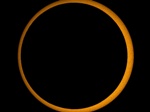 Superb annular eclipse of 2010
Superb annular eclipse of 2010
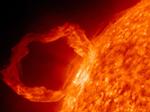 The ring of fire from March 2010
The ring of fire from March 2010
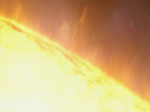 The gigantic power of the Sun
The gigantic power of the Sun
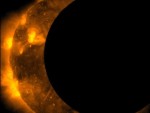 Our satellites also observe eclipses
Our satellites also observe eclipses
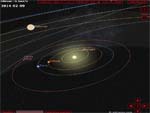 Simulator, the revolution of the planets around the Sun
Simulator, the revolution of the planets around the Sun
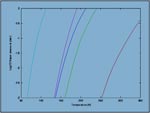 The solar system ice line
The solar system ice line
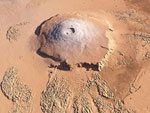 Tourist trip in the solar system
Tourist trip in the solar system
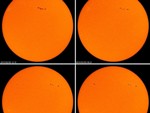 Finally the return of sunspots in 2010
Finally the return of sunspots in 2010
 Solar pillar, a link between sky and earth
Solar pillar, a link between sky and earth
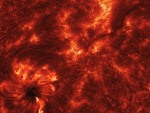 The infernal journey of the photon or random walk
The infernal journey of the photon or random walk
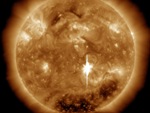 The most violent solar flares
The most violent solar flares
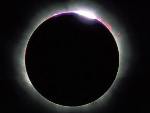 Baily grains in a solar eclipse
Baily grains in a solar eclipse
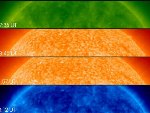 2003 transit of Mercury in front of the Sun
2003 transit of Mercury in front of the Sun
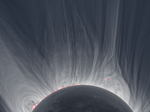 The Sun is a yellow dwarf star
The Sun is a yellow dwarf star
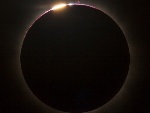 Grains of Baily or pearls of light
Grains of Baily or pearls of light
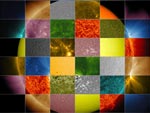 Sunlight and wavelengths
Sunlight and wavelengths
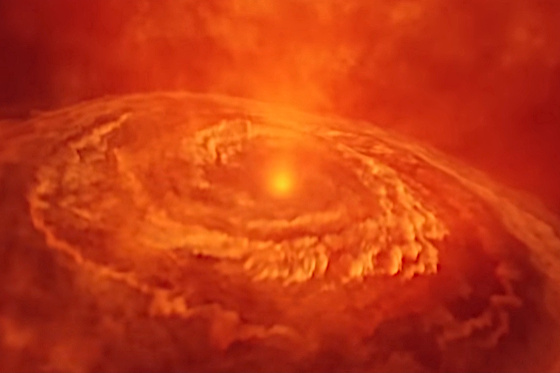 The chaotic formation of the solar system
The chaotic formation of the solar system
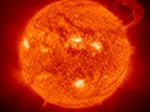 The perfect solar storm
The perfect solar storm
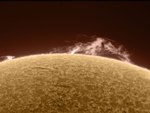 Coronal mass ejections
Coronal mass ejections
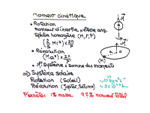 The Sun's angular momentum paradox
The Sun's angular momentum paradox
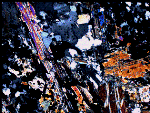 The paradox of the young Sun
The paradox of the young Sun
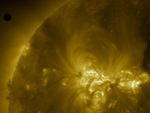 Transit of the planet Venus on June 6, 2012
Transit of the planet Venus on June 6, 2012
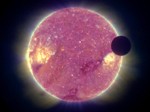 Transit of the Moon in front of the Sun seen from space in 2007
Transit of the Moon in front of the Sun seen from space in 2007
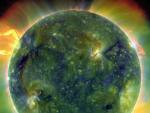 Video of solar winds in space
Video of solar winds in space
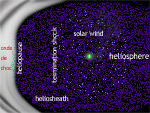 The last frontier
The last frontier